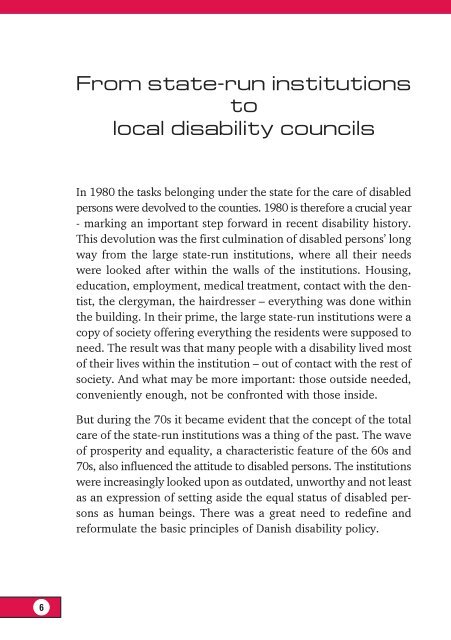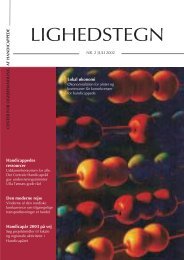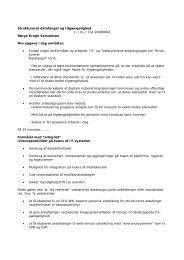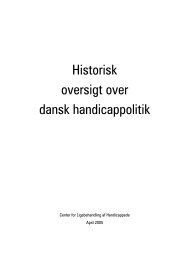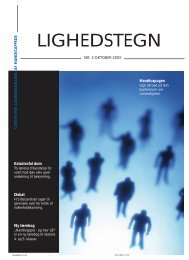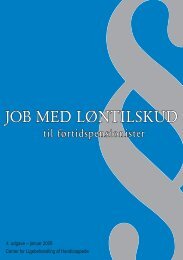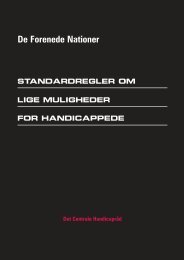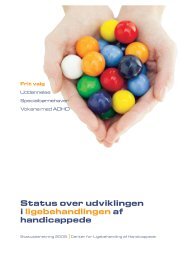THE PRINCIPLES OF DANISH DISABILITY POLICY
THE PRINCIPLES OF DANISH DISABILITY POLICY
THE PRINCIPLES OF DANISH DISABILITY POLICY
Create successful ePaper yourself
Turn your PDF publications into a flip-book with our unique Google optimized e-Paper software.
From state-run institutionstolocal disability councilsIn 1980 the tasks belonging under the state for the care of disabledpersons were devolved to the counties. 1980 is therefore a crucial year- marking an important step forward in recent disability history.This devolution was the first culmination of disabled persons’ longway from the large state-run institutions, where all their needswere looked after within the walls of the institutions. Housing,education, employment, medical treatment, contact with the dentist,the clergyman, the hairdresser – everything was done withinthe building. In their prime, the large state-run institutions were acopy of society offering everything the residents were supposed toneed. The result was that many people with a disability lived mostof their lives within the institution – out of contact with the rest ofsociety. And what may be more important: those outside needed,conveniently enough, not be confronted with those inside.But during the 70s it became evident that the concept of the totalcare of the state-run institutions was a thing of the past. The waveof prosperity and equality, a characteristic feature of the 60s and70s, also influenced the attitude to disabled persons. The institutionswere increasingly looked upon as outdated, unworthy and not leastas an expression of setting aside the equal status of disabled personsas human beings. There was a great need to redefine andreformulate the basic principles of Danish disability policy.6


